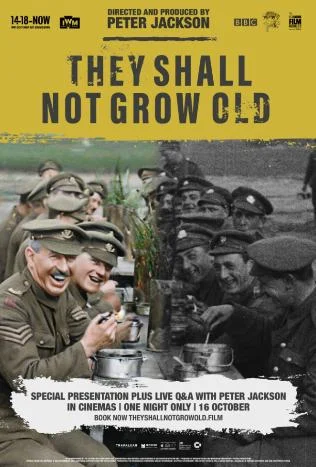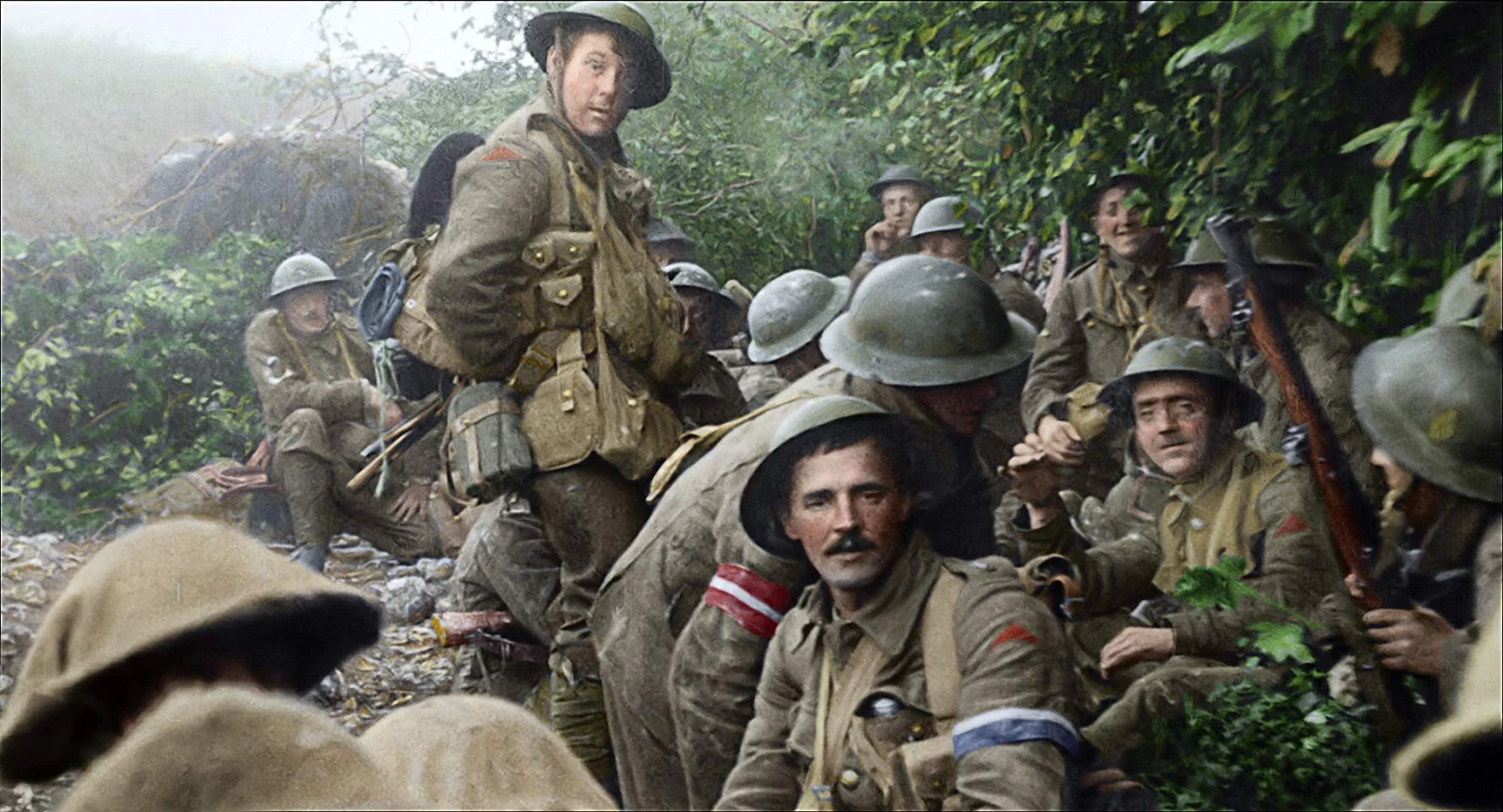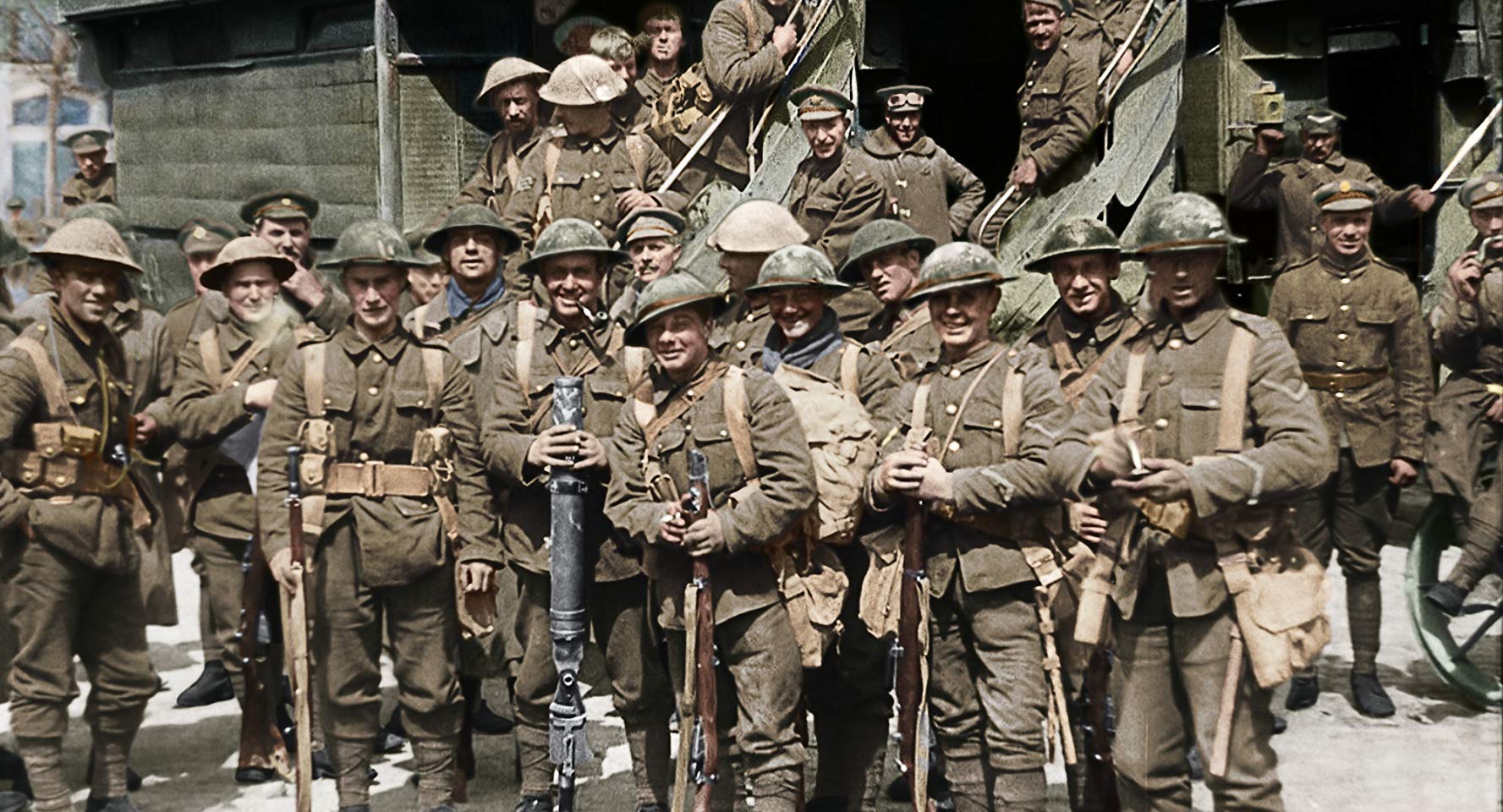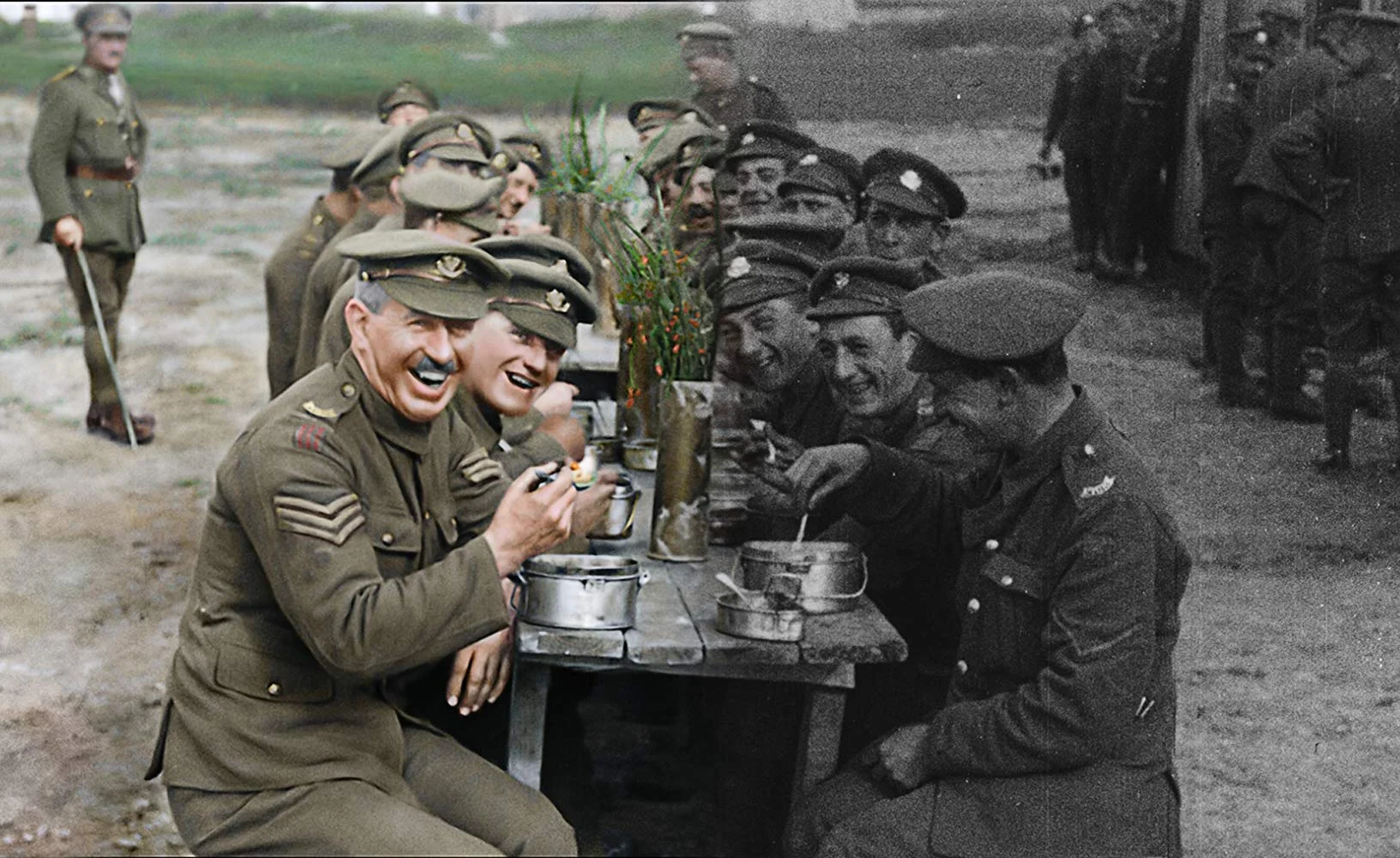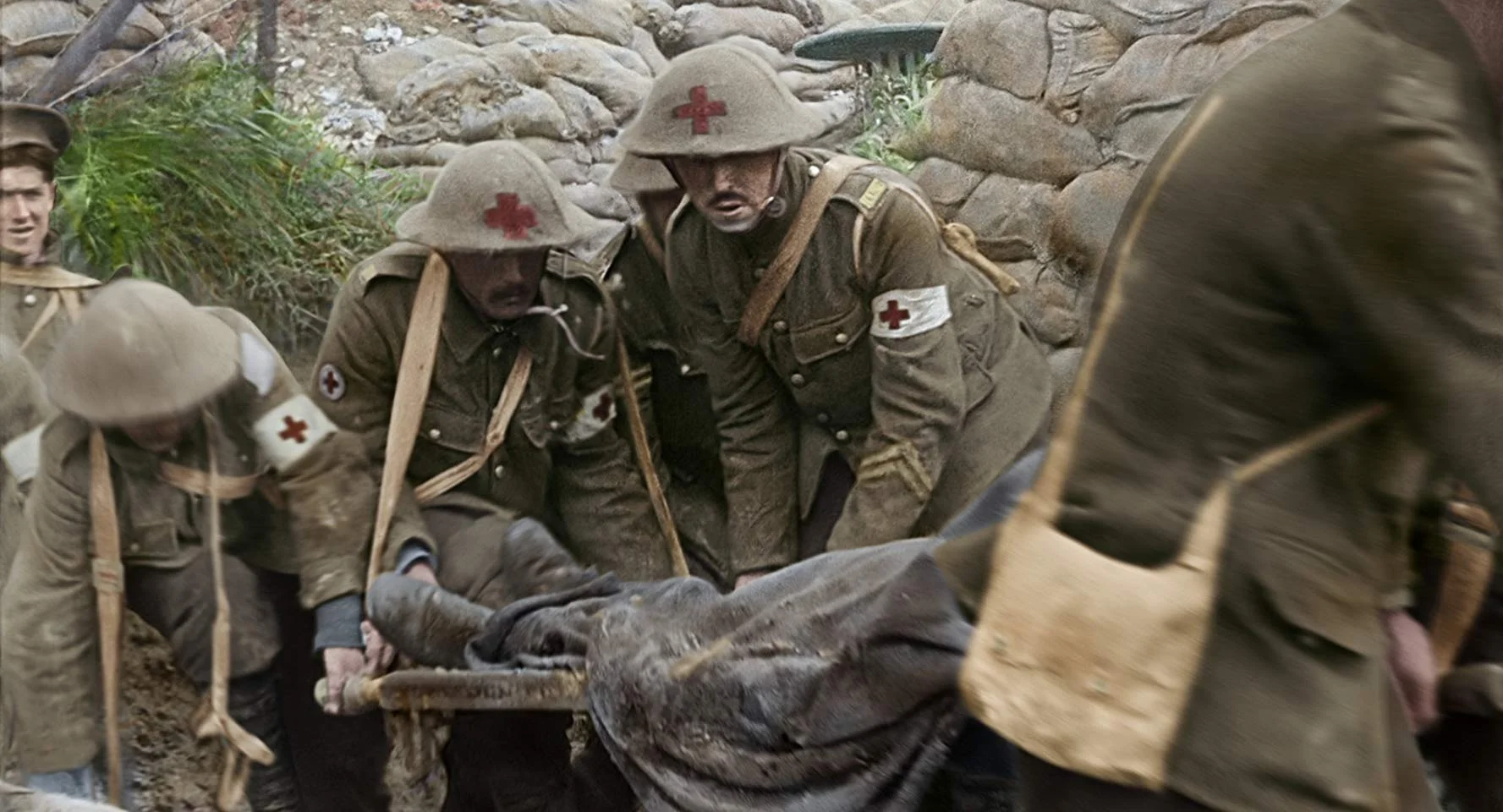They Shall Not Grow Old ****
They Are No Longer Caricatures
This right here is what filmmakers are talking about when they say that they are using computer technology to enhance the story. What will impress you the most this year is not the Atlantis that Aquaman lives in or the comic book world of the Spider-Verse but the stunning modernization of 100 year old World War 1 footage. They Shall Not Grow Old proves that film is a vessel that transports us through time. Through the grueling pain staking detail of going through hundreds of hours of footage and interviews New Zealand’s WETA Digital brings you every sight, even smell of the first World War. Ken Burns can eat his heart out. Where his films are purely educational leaving little room for emotion Peter Jackson’s They Shall Not Grow Old makes you weep for the soldiers of a War that has become a mere political footnote for an unnecessary war. Its soldiers forgotten amongst the fog of the convolution of mayhem. These men were not some NPC (non playable characters) to be killed in a video game. They were our great grand fathers. They were people who endured the most inhumane conditions of living in order to fight for their country, even if they didn’t know why. The deconstruction of their public dignity couldn’t shatter the private decency that they carried with them.
The mold that Mr. Jackson had to assemble with the insurmountable amount of clay put before him is staggering. Relying on countless anonymous voices of men who now long have passed Peter Jackson tells merely the story of the British Regiment. Shifting through more than roughly 800 hours of interviews the anonymous voices of the British regiment starts their story from before the war. Speaking of the propaganda to go fight for your country, what it was like to live at home during that time then the time they spent in bootcamp. While this first half of the film plays we see the footage as we all know it, silent black and white Babe Ruth running around the bases at 12 frames per second action. Once these men are in the middle of the battlefield about 24-30 minutes in the picture we get the big selling point of the film where the frame slowly gets larger and larger, then the color and the sound, we are now transported into 1914 World War I. The attention to detail is so stunning it’s something I can’t explain on the page. Never before have a I seen a group of roughly one hundred people in the theatre audibly gasp with a slow breath of excitement.
Not only the image but the sound as well. Voice actors were hired to speak the words the soldiers spoke in that silent footage. Certain linguistic experts were able to pinpoint through the footage what the soldiers were actually saying. Folly effects with actually WWI artillery were used to create the sound of war. The room tone of a battlefield laded with unspeakable filth comes to life. The most impressive feature of all is the frame rate. Shot by shot the film had to be slowed to fit what would best represent 24 frames per second. What our human eye is used to interpreting as motion on film. With all of these elements what the soldiers of these regiments have to say is so much more important because together we are sitting in a dark room with them living their past. We are literally watching footage of the final moments of these mens lives right before they die. We are on the battlefield. Through stunning digital restoration we can sympathize with them so much more.
When the film reaches its final moments after the war it returns to black and white fast motion film. Everyone back in their hometown don’t understand what they’ve been through. They don’t even seem to care. As much as this is a theme echoed amongst film and documentary it’s the authentic of switching from a beautifully restored print to black and white simplicity that makes us understand the pain our great grandfathers must have felt. The world outside of the battlefield is a simple place to folks who weren’t there. It’s just a matter of politics. The unspeakable horror, exhaustion, comradery, none of it is relatable to the common man who lives in a black and white world. Peter Jackson has created one of the greatest documentaries about World War I to ever be told. In his own words he made it because of his grandfather who died before he was born due to war injuries. It was Jackson’s goal for us to remember our own family members who served int he war. For us to know they are not flat black and white images with no personality to be viewed in a classroom or the history channel. Upon leaving the theatre I heard many speak about their grandfathers who served in the war. My father spoke to me of his great grandfather. There are notes of his from the war for which I will now digitize because I want to know what he went through. This is Mr. Jackson’s most personal film since “Heavenly Creatures.” A wonderful return to form that I pray returns to the big screen.
